The power of personalized marketing: How to engage customers at scale
Published on September 03, 2025/Last edited on October 03, 2025/12 min read
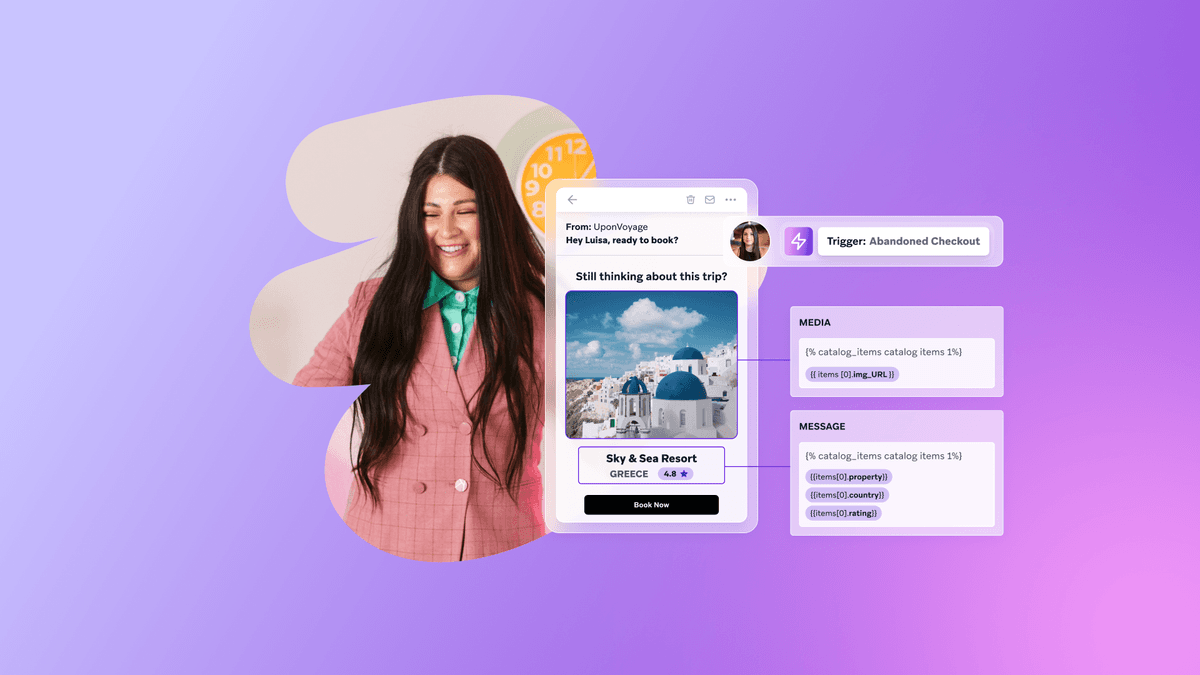
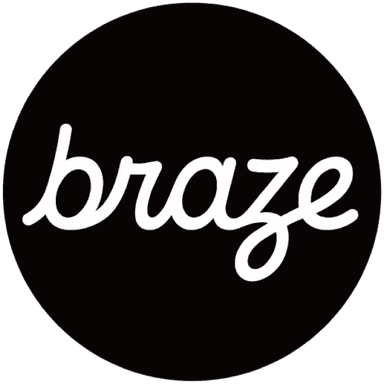
Team Braze
BrazeCustomers expect relevance from every brand interaction, across every channel, and at every stage of the journey. When they don’t get it, they’re quick to disengage.
Personalized marketing is how brands meet those expectations and turn static campaigns into dynamic conversations, built around real behaviors, preferences, and needs. There are now many ways to personalize your marketing efforts. It could be, for example, a timely product recommendation, a reminder to finish checkout, or a loyalty offer that feels tailor-made.
Personalization brings context to every message, pushing things further than customizing a message. It changes the model of marketing, responding in real time, across channels, at scale.
Here, we’ll unpack what personalized marketing really looks like today, explore its core benefits and challenges, and outline how to build a strategy that connects.
Contents
- What is personalized marketing?
- Why personalized marketing matters
- The benefits of personalized marketing
- The challenges of personalized marketing
- What kind of data powers personalized marketing
- Six steps to build a personalized marketing strategy
- How Braze helps teams personalize at scale
- Real-world personalized marketing wins
- Final thoughts on personalized marketing
- Personalized marketing FAQs
What is personalized marketing?
Personalized marketing is the practice of tailoring brand experiences to each individual based on their preferences, behaviors, and real-time context. That might mean tailoring a homepage to match browsing behavior, sending a how-to guide when someone stalls during onboarding, or timing a birthday discount to land on the channel they use most.
Personalization works best when it’s grounded in what people actually do, not just who they are on paper. Instead of relying on broad segments or static profile fields, effective strategies adapt to real behavior and preferences in the moment.
True personalization means:
- Messaging adapts as behavior changes
- Content updates based on real-time data
- Journeys evolve automatically based on context
- Touchpoints feel seamless across devices and channels
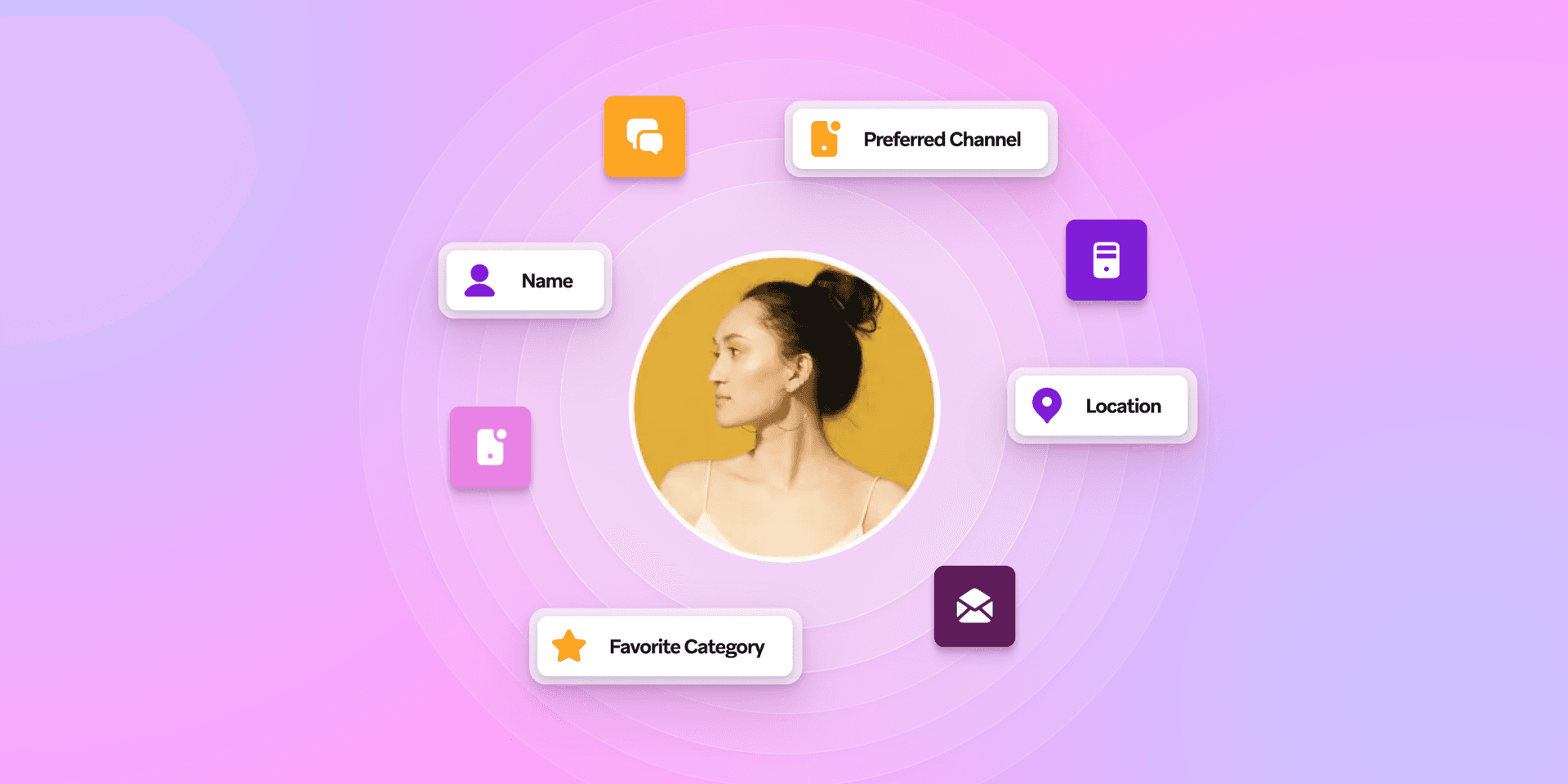
Personalized marketing creates a sense of continuity that makes it feel like the brand just gets you.
This is what separates modern customer engagement from traditional batch-and-blast marketing. It’s quality over quantity.
To do that well, you need the right foundation—actionable data, the right tools, and a strategy that balances relevance with respect.
Why personalized marketing matters
Personalization drives results. Brands that tailor their marketing see stronger performance across key metrics, from engagement and retention to acquisition efficiency and customer lifetime value.
It also helps teams make smarter use of their time and resources. When marketers can act on live customer data, they can stop guessing and start delivering experiences that actually work.
The business impact is clear. According to recent research, companies that use personalization effectively can see revenue increase by up to 15% and marketing ROI by as much as 30%, as well as reducing customer acquisition costs by as up to 50%.
In fast-moving markets, the ability to respond with relevance—at scale—can shape not just individual campaigns, but long-term brand growth.
The benefits of personalized marketing
The real power of personalization is cumulative. A single message might boost click-throughs, but it’s the broader effect—more useful conversations, more relevant journeys, more consistent value—that compounds over time. The brands that invest in this improve individual metrics, but also shift how people experience and remember the business.
Increased customer engagement
When messages feel timely and relevant, people are more likely to pay attention. Personalized campaigns consistently outperform generic ones, which can lead to engagement rates and conversions. It's a shift from interruption to interaction.
Improved targeting and efficiency
Personalization helps marketers reach the right people with the right message, instead of spreading effort thin across a broad audience. It means fewer wasted impressions, more meaningful connections, and better performance from the same budget.
Higher lead generation and conversions
People are more likely to act when a message speaks directly to their needs or interests. From tailored product recommendations to personalized onboarding flows, even small adjustments can help remove friction and move someone closer to conversion.
Stronger customer relationships
When marketing reflects a person’s preferences, habits, and timing, it builds trust over time. Personalization makes people feel recognized, not just targeted. That connection translates into stronger brand affinity and long-term loyalty.
Enhanced brand perception
Thoughtful, relevant experiences make a brand feel helpful instead of pushy. Personalization contributes to a more polished, responsive brand image—something that’s hard to fake and easy to lose.
Revenue growth and measurable impact
Whether it’s increased average order value, better upsell performance, or reduced churn, personalized marketing tends to pay off in ways that show up on the bottom line. When customers get value, businesses do too.
The challenges of personalized marketing
For all its upside, personalization can be tricky to get right. Even teams that fully believe in it often hit operational snags. Here’s where things tend to get complicated.
Too much data, not enough access
Marketers usually have no shortage of customer data—but getting it in the right format, at the right time, can be a different story. When data lives in disconnected systems or requires engineering support to activate, it slows everything down.
Personalization that feels forced
Just because you can personalize something doesn’t mean you should. Irrelevant or overly specific messages can feel intrusive, especially if they’re based on outdated behavior or show up at the wrong moment.
Inconsistent experiences across channels
Customers don’t think in channels—but many marketing stacks still do. Without connected systems and shared logic, it’s easy to send mixed messages across email, SMS, push, and in-app.
Resource strain and internal alignment
Building personalized campaigns takes more time, more content, and more coordination. Without the right tools or buy-in across teams, personalization can become a bottleneck instead of a boost.
What kind of data powers personalized marketing
Personalization only works when it’s based on meaningful signals. The right data helps marketers understand who someone is, what they care about, and how they interact across touchpoints. Here are the main types of data that make it possible:
Demographic data
Age, location, language, job title, and other background attributes help tailor messaging to context—like time zone, cultural norms, or seasonal relevance.
Behavioral data
This includes what someone browses, clicks, or taps—and how often they return. It helps teams understand intent and identify what stage of the journey someone might be in.
Transactional data
Purchase history, order value, product category preferences, and subscription status inform messaging that speaks to real customer value and interest.
Zero-party data
Preferences shared directly by the customer—like style, goals, or communication settings—help marketers personalize without guessing. This kind of data often comes from surveys, quizzes, or onboarding flows.
Device and channel data
Knowing how someone interacts (mobile vs desktop, SMS vs email) can guide when and where to send messages for the best chance of engagement.
The most effective personalization strategies combine multiple data types into a real-time, unified view—giving marketers the full context they need to respond in the moment.
Six steps to build a personalized marketing strategy
You don’t need to personalize everything at once. A strong strategy starts by focusing on the moments where relevance has the most impact—then scaling from there with the right data, tools, and internal support.
1. Set clear goals
Start with the outcome. Are you trying to increase conversions? Improve onboarding? Reduce churn? Defining what success looks like makes it easier to decide where personalization belongs—and how to measure progress. Use campaign performance dashboards or customer journey reports to track what’s working across segments, channels, and lifecycle stages.
2. Segment your audience meaningfully
Effective segmentation takes more than demographic filters. Look at behavior, purchase patterns, engagement signals, and predictive likelihood to act. Use that insight to group people in strategic, actionable ways. The more precise the segment, the more effective your messaging will be. Look for segmentation tools that support real-time updates and can sync across your channels.
3. Choose the right channels
Different channels serve different roles. Email is ideal for detailed content, while in-app messages work well for guidance and feature education. Push notifications can drive urgency, and SMS is great for time-sensitive offers or confirmations. The key is to personalize across channels without repeating yourself—so messages feel connected, not duplicated.
4. Map key customer journeys
Think about the turning points in your lifecycle: first visits, sign-ups, purchases, drop-offs, renewals. These are the moments where relevance makes the biggest difference. Use a journey orchestration tool to map how users move from one stage to the next—and where personalization can smooth the way.
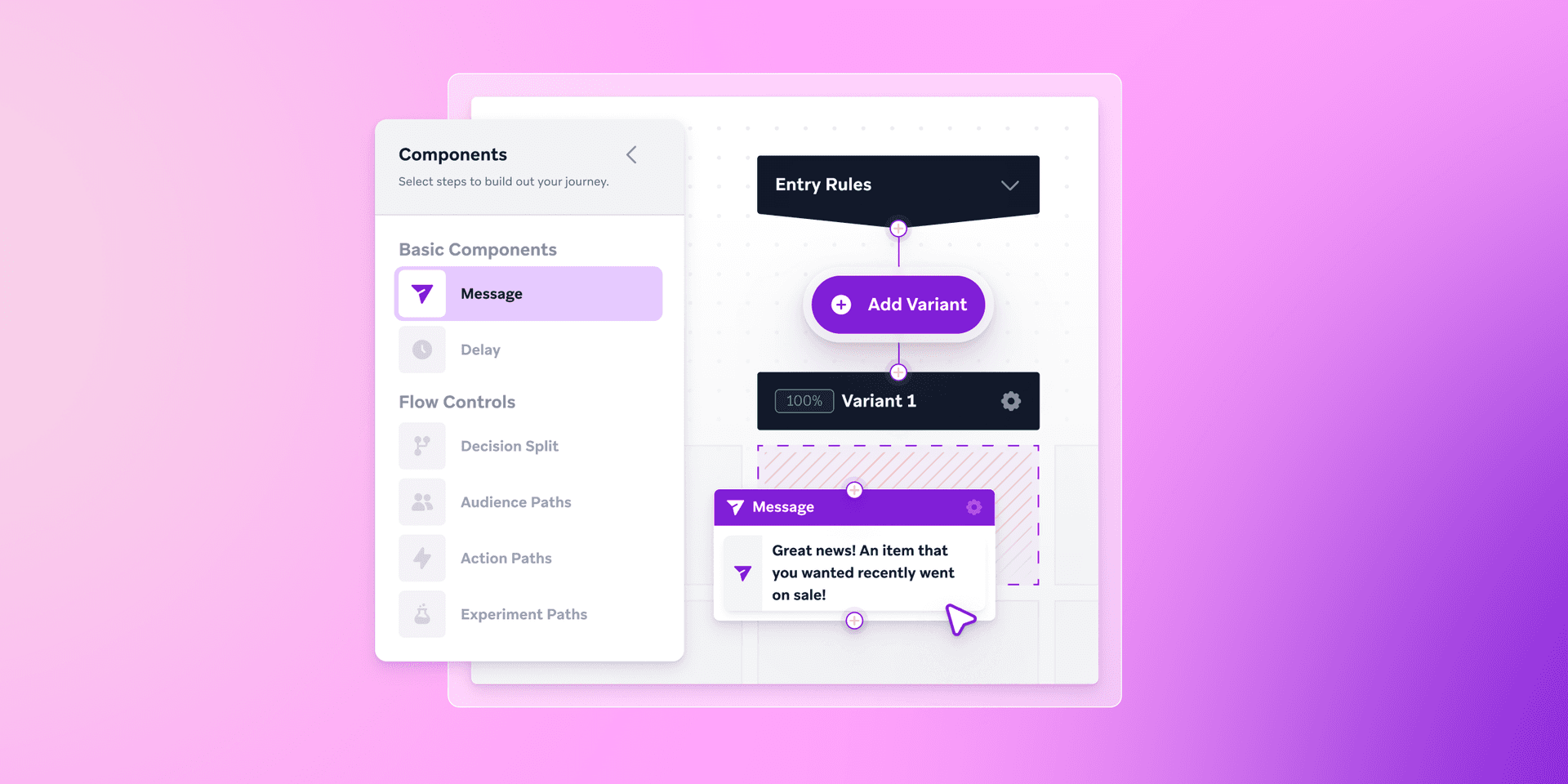
5. Personalize content and timing
Dynamic content blocks, conditional logic, and send-time optimization help you tailor the experience without creating dozens of variations manually. Whether it’s product recommendations, messaging formats, or channel selection, the goal is to reflect what someone needs in the moment they need it.
6. Test, measure, and optimize
Personalization isn’t a one-time setup. Use A/B testing, multivariate experiments, and holdout groups to compare personalized and non-personalized experiences. This gives you a clearer view of what’s driving real results—and what needs adjusting. Look for reporting tools that make it easy to compare performance across segments and journeys.
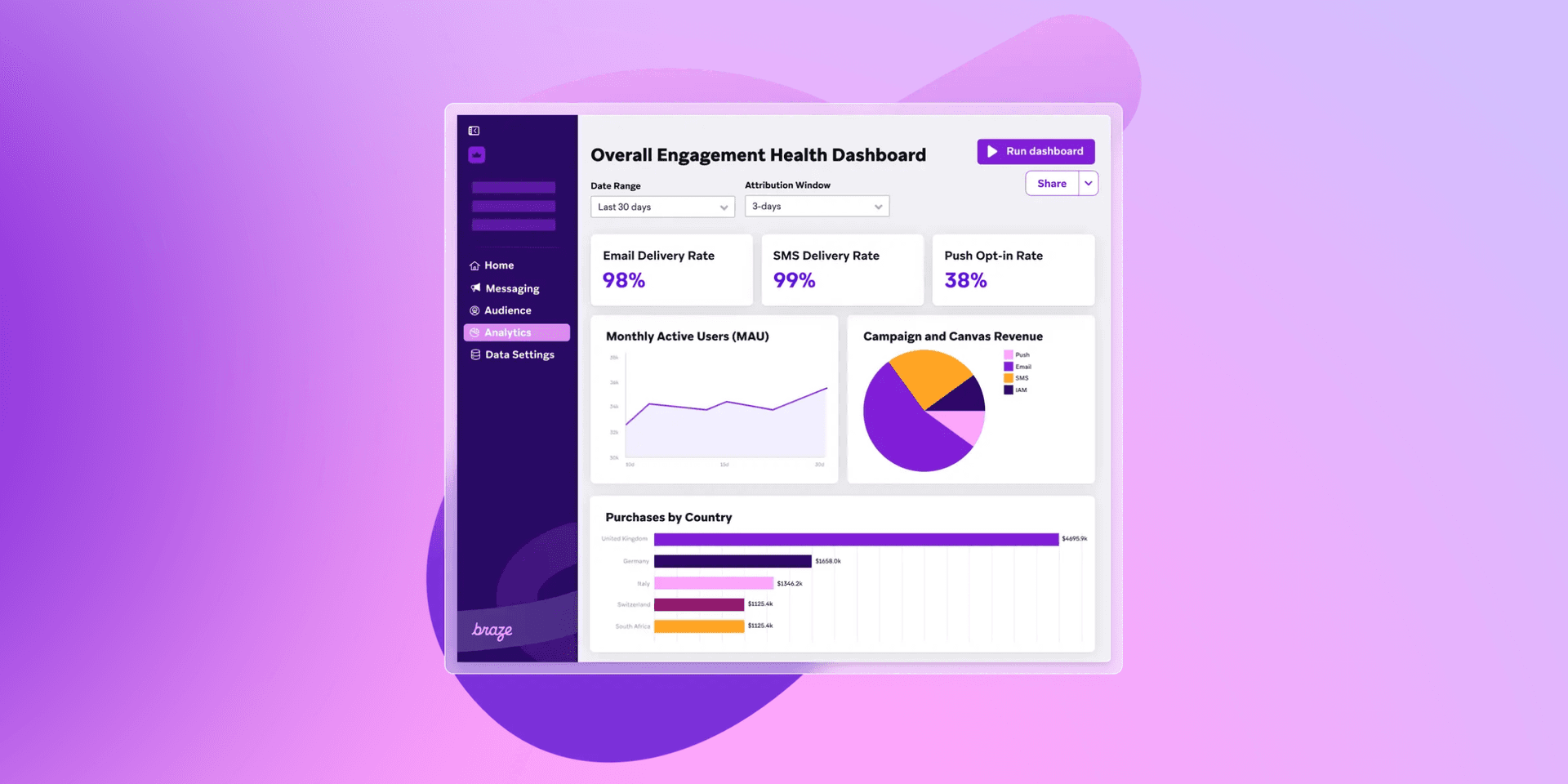
How Braze helps teams personalize at scale
Personalization is only as effective as the tools behind it. Braze is built to help marketers turn customer data into meaningful, real-time experiences—without the usual complexity or engineering delays.
Here’s how it supports personalization across every stage of execution:
- Real-time data ingestionConnect data from across your tech stack—web, mobile, CRM, ecommerce, analytics—and keep it live, so your campaigns reflect what’s happening right now.
- Dynamic segmentationCreate live audiences based on behavior, preferences, location, purchase patterns, and more. Segments update in real time, so you’re speaking to the right people.
- Journey orchestrationDesign and automate cross-channel campaigns that respond to user behavior across the lifecycle. Drag-and-drop tools make it easy to adjust flows, test variants, and optimize outcomes.
- Dynamic personalizationUse dynamic personalization tools to personalize email, push, in-app, or SMS messages—down to individual product recommendations, offers, or copy variations.
- AI personalization and optimizationAccess AI features to predict churn, identify next best actions, or optimize send time and delivery channel automatically.
- Unified reporting and testing toolsTrack performance across channels, segments, and journeys in one place. Use holdouts, experiments, and visual reports to see what’s working and where to adjust.
Real-world personalized marketing wins
From sports leagues to global retailers, personalization looks different for every brand. But the underlying goal is the same: create value by making each interaction count. These brands found ways to do that—quickly, creatively, and at scale.
NBL’s playbook: Sell out seats and grow the fanbase in 25 hours
Since 1979, the National Basketball League (NBL) has been spotlighting basketball heroes and building a loyal, growing fan community. With a vision to become the most engaged global fan base in Australian sports, the league’s marketing team needed a way to better connect with fans across channels—and do more with limited time and resources.
The problem
The NBL team already had strong multi-channel reach, spanning email, mobile app messaging, web, social, and more. But as they looked to deepen engagement and expand their audience, they needed more advanced personalization and the ability to activate customer data quickly. Their existing email point solution couldn’t support cross-channel campaigns or flexible audience targeting.
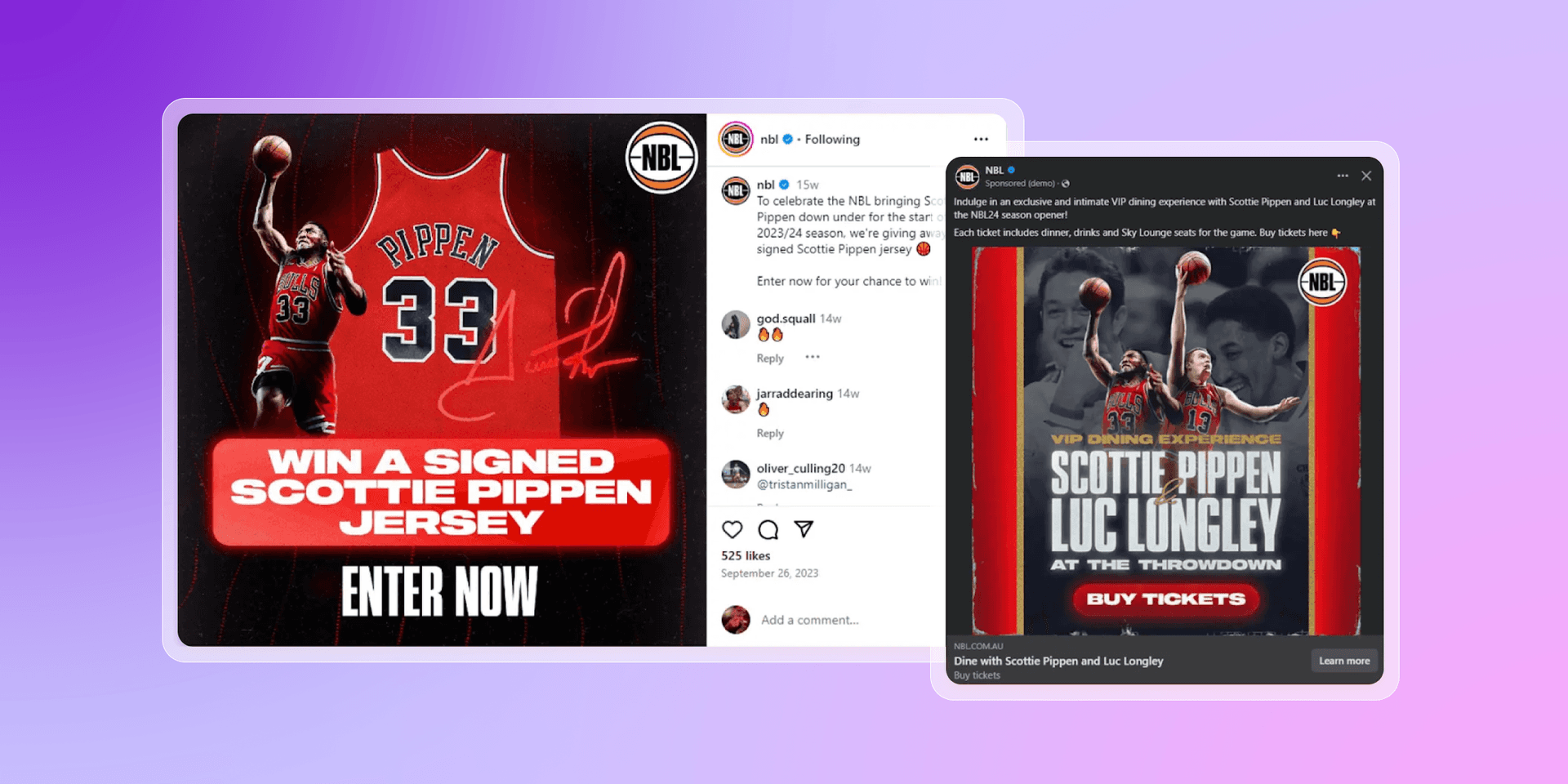
The strategy
The NBL adopted Braze and integrated their Google Cloud Platform data to create rich, segmentable audiences. For a time-sensitive campaign featuring basketball legend Scottie Pippen, they used Braze Audience Sync to push these audiences into Meta Ads Manager—helping them reach VIP buyers with targeted ads while excluding existing fans from the acquisition campaign. The setup took just 20 minutes in Braze.
The results
The NBL sold out every Scottie Pippen event and improved ad efficiency by targeting the right audiences with the right messaging. They also drove opt-ins from new fans, growing their database while keeping acquisition costs low. The campaign was delivered in just 25 hours of total work, with Braze powering quick pivots and long-term gains.
Dutch Bros brews loyalty with smarter, cross-channel personalization
Dutch Bros is more than a coffee brand. With over 800 locations across the United States, the Oregon-based company sees itself as being in the relationship business—prioritizing connection, community, and conversation with every customer interaction.
The problem
The Dutch Bros mobile app plays a critical role in extending that experience digitally. But fragmentation across tools and platforms made it hard to deliver consistent messaging, personalize at scale, or act quickly on customer insights. These gaps led to inefficiencies, disconnected touchpoints, and missed opportunities for deeper engagement.
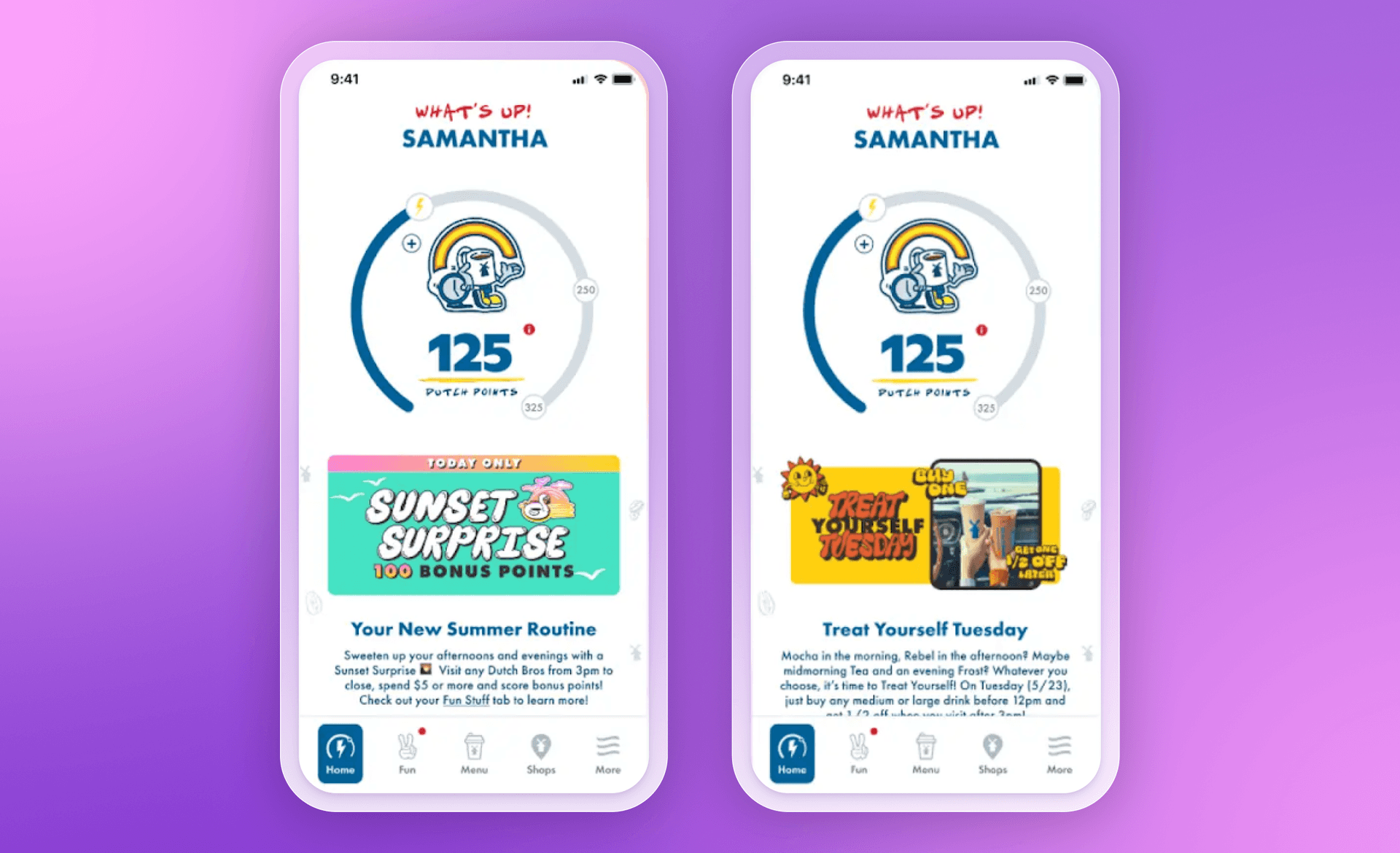
The strategy
Dutch Bros adopted Braze to unify its messaging channels and bring real-time customer data into every interaction. Using tools like Canvas and Catalogs, the team built product-specific, location-aware campaigns tailored to each customer’s preferences and behaviors—from tipping and digital badge activity to stored value use and drink choice.
They used integrated partner tools like Segment to bring in data from their CDP, allowing them to create dynamic audiences and trigger cross-channel messages based on real-time insight. The marketing team could easily experiment, iterate, and collaborate—without relying on multiple platforms or manual setup.
The results
Switching to Braze allowed Dutch Bros to streamline its software stack, reduce costs, and improve coordination across teams. With campaigns now easier to manage and personalize, the brand delivered more timely, relevant messaging across email, SMS, push, and in-app. Dutch Bros saw a 230% increase in ROI from CRM campaigns and achieved a 31% cost savings through platform consolidation.
Final thoughts on personalized marketing
Personalized marketing works best when it’s part of a connected strategy, not an isolated tactic. It’s the thread that runs through every interaction, turning data into context, and context into value.
For marketing teams, it’s also a way to work smarter. When messages adapt automatically, journeys evolve in real time, and performance insights are easy to act on. Personalization stops being a blocker then and starts becoming a multiplier.
The brands seeing results aren’t the ones sending the most messages. They’re the ones sending the most relevant ones.
Personalized marketing FAQs
Brands can deliver personalized marketing without being intrusive by focusing on relevance, timing, and transparency. That means using real-time data to inform messaging, avoiding over-messaging, and respecting preferences around frequency and channel. Clear consent and easy opt-outs help maintain trust while still creating tailored experiences.
Tools that help personalize marketing at scale include customer engagement platforms, customer data platforms (CDPs), journey orchestration tools, and segmentation engines. These tools allow marketers to unify data, automate messaging, and adapt content based on real-time customer behavior.
Businesses can expect significant improvement from personalized marketing, with some seeing up to a 15% lift in revenue and up to a 30% gain in marketing efficiency. Results vary by industry and maturity, but brands that personalize consistently outperform those that don’t.
To start personalizing marketing, you need a mix of demographic data, behavioral signals, purchase history, device preferences, and zero-party data (information shared directly by customers). The more complete and current the data, the more relevant your campaigns can be.
To measure the success of personalized marketing campaigns, brands track metrics like click-through rates, conversions, average order value, retention, and ROI. Comparing personalized experiences against control groups also helps identify what’s working and where to adjust.
Be Absolutely Engaging.™
Sign up for regular updates from Braze.
Related Content
View the Blog
The new inbox reality: How iOS changes are reshaping email marketing

Aparna Prasad

Experience optimization: Turning data insights into better journeys

Team Braze

December 2025 Bonfire Marketer of the Month: Jagex’s Emma Oliver
